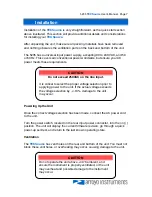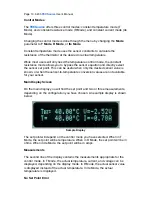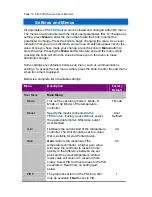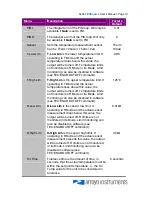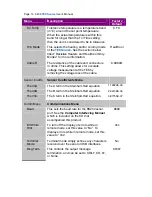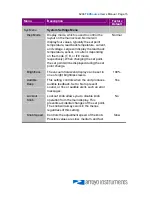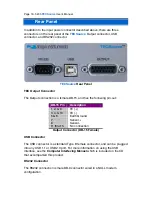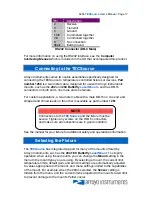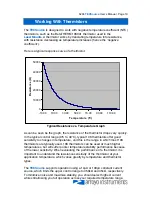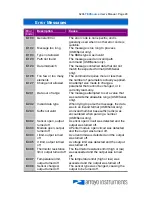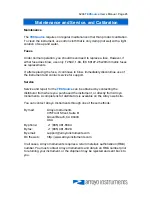
5235
TECSource
User’s Manual · Page 21
To manually adjust the PID, start by changing the I and D values to zero, and
adjust the P value so that it reaches the set point as quickly as possible without
overshooting the set point an unacceptable amount. Gradually increase the I
value until the set point is achieved without oscillation. In many systems, the D
term is not needed and may be left at zero.
For additional information on PID loop tuning, consult online resources such as
Wikipedia (http://en.wikipedia.org/wiki/PID_controller) or search for terms such
as “Ziegler-Nichols method”, or “PID Loop”.
Compensating for Cable Resistance
Because the high currents the
TECSource
can drive through the Peltier, the
voltage loss through the cable and connectors of the system can significantly
affect the TEC voltage measurement. In most cases, accurate voltage
measurements are not needed, and the default compensation of the instrument
is sufficient. To improve the compensation, the
Cable R
setting in the menu
allows you to specify the cable resistance, which is then used to dynamically
subtract the voltage drop by simply using the formula V = IR to calculate the
voltage loss, where I is the TEC ITE current, and R is the
Cable R
setting. This
value is then removed from the voltage measurement to display an accurate
TEC voltage measurement.
The safest method of calculating cable resistance is to short the ITE+ and ITE–
connections, making sure whatever you are using to short the terminals is not
itself adding resistance to the circuit. Use short, heavy gauge wires, preferably
soldered onto the terminals to minimize any resistance the short might add.
Place the short as close to the Peltier as is reasonable. A simple approach is to
unplug the cable from the mount and place a shorting plug on the mount end of
the cable, which is easily made from a male DB15 connector and a soldering
iron to solder the ITE+ and ITE– pins together. Make sure the Peltier is
disconnected to protect it from current overloading during the test.
Change the instrument to ITE mode and set the current to 5A. Depending on
your setup, you may first need to change the Mount to User Defined and adjust
the limit to 5A. Turn on the output and after the voltage has stabilize, make a
note of it and turn the output off. Enter the measured voltage into the following
equation to calculate
Cable R
:
Cable R = Voltage / 5
Enter the resulting values into the
Cable R
menu entry and return the instrument
to its original configuration. Typical values for
Cable R
are 0.008 to 0.040, but
depend on your actual configuration.
Summary of Contents for Arroyo 5235
Page 1: ......
Page 26: ...Page 26 5235 TECSource User s Manual Notes...

